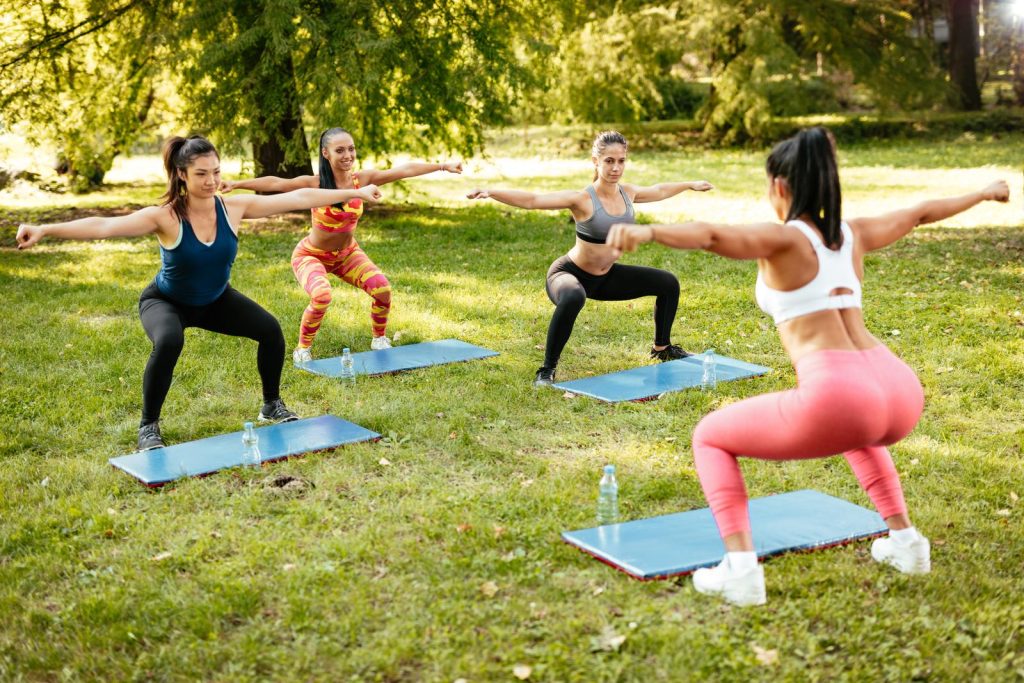Would you like to make going to the gym a regular part of your schedule? The benefits of regular exercise build upon one another. Regular exercise can improve your mood, lower your risk of sickness, help you sleep better, and improve motion in everyday activities. It can also reduce the amount of time you spend awake during the day.
Regular exercise can help you maintain your mobility, agility, and sense of movement over the long term. It also has the potential to make you live longer.
Altering the exercises you do on a daily basis throughout your workouts is a good idea if you want to maximize the positive effects of your consistent exercise regimen. Alternating between different kinds of activities is another strategy to help lower the risk of injury.
According to the findings of numerous studies, it is essential to incorporate each of the four primary forms of exercise into one’s regular practice.
Your routine should consist of at least one of each of these four types of exercises:
1. Endurance.

Fitness of the heart and lungs is meant to be referred to as endurance. It is the capacity of your body to continue engaging in physical exercise for a considerable amount of time. This form of physical activity raises your heart rate and can help improve your overall health in a number of ways, including lowering your chance of developing cardiovascular disease, stroke, and diabetes.
Your breathing and pulse rate will both increase while you perform endurance exercises. Do aerobic or cardio workouts, such as jogging, swimming, dancing, biking, climbing stairs, or high-intensity interval training, to develop your endurance.
Exercises that test your endurance not only help you burn calories but also contribute to weight loss.
Participating in aerobic exercise is one of the finest strategies to increase one’s level of endurance. The American Heart Association suggests that adults do at least 150 minutes of aerobic activity per week at a moderate intensity or at least 75 minutes of vigorous exercise per week.
If necessary, you can divide this task into several shorter periods and spread them out over the course of the day or the week.
If you have never done aerobic exercise before, you should ease into a fitness program by gradually build up both the intensity and the duration as time goes on. Start slow and ease into it. Later, you might also try combining interval training, which consists of alternating between bouts of strenuous exercise and bouts of rest or exercise performed at a lesser intensity. Your endurance will improve as a result, and you will burn more calories in a shorter amount of time.
2. Strength.

Strength training, also known as resistance training, is absolutely necessary for both the development of muscle mass and the maintenance of existing bone density. In addition to this, it helps boost metabolism, which in turn can contribute to both weight loss and improved health in general. Exercises employing only one’s own body weight, free weights, weight machines, or resistance bands can all be included in a program of strength training.
Strength training not only helps you manage your weight but also builds muscle and strengthens your bones. These resistance-based training program include activities such as weight lifting, push-ups, arm curls, and the utilization of resistance bands.
To successfully integrate strength training into your routine, you should strive to do at least two full-body workouts three times a week, each of which should focus on one or more of the major muscle groups. Exercises such as squats, lunges, push-ups, and pull-ups are included in this category. Begin with exercises that use lesser weights or your own bodyweight, and as you get stronger, progressively increase the difficulty of the exercises by adding more resistance or weight.
It is critical to schedule rest and recovery time in between sessions of strength training in order to give your muscles the opportunity to develop stronger and repair themselves. A minimum of forty-eight hours of rest should elapse between sessions of strength training that focus on the same muscle groups.
3. Balance.

Maintaining your balance is essential for performing activities of everyday living such as walking, climbing stairs, and carrying goods. It also helps prevent falls, which can be very significant for elderly persons. There are a lot of different balance exercises that are specifically geared at improving balance, like yoga, tai chi, even martial arts training.
In the long run, these workouts also can improve in preventing falls in older adults.
Also, consider adding some yoga positions like tree pose or warrior III to your practice in order to incorporate balance training into your workout. Another option is to stand on one leg while conducting activities such as tooth brushing or dishwashing. While performing strength exercises, you might also try using a balancing board or a stability ball to increase the difficulty of the challenge to your balance and core stability.
4. Flexibility.

Maintaining a healthy range of motion and avoiding injury both need a certain degree of flexibility. In addition to that, it helps improve posture and eliminates pain and stiffness in the muscles. Stretching, yoga, and Pilates are all forms of exercise that can help increase flexibility.
Exercises that increase our flexibility also help to alleviate discomfort and improve mobility.
Aim to stretch for at least ten to fifteen minutes after each session of strength training in order to add flexibility exercises into your regimen. It is essential to keep in mind that stretching should be done in a leisurely and gentle manner. You should never bounce when stretching or force your body into postures that are uncomfortable. Repeat each stretch on both sides, being sure to hold each one for at least 30 seconds.
When you make progress in one area (like endurance, for example), you may find that other areas (like strength workouts) become simpler for you to perform as well.
If you want to exercise every day, follow these guidelines:
Start with 2 minutes.
If you want to start a new routine every day, you should make it as simple as possible for yourself to get started. Beginning with just two minutes of exercise will help you ease into the pattern of working out. Do you still wish to proceed after two minutes have passed? If so, keep continuing! If not, then show up once more the next day.
Make it simple to exercise.
The ultimate mind hack to exercise is making it easy.
- Make a decision regarding the timing and location of your workout the day before it takes place.
- Put your workout gear in a specific location that is easily accessible each day.
- Get everything ready the night before, including your footwear, food, and fluids.
Consider signing up for a class or working with a personal trainer.
Make it a group activity if you have trouble working out on your alone. Consider enrolling in a fitness class or working with a personal trainer. This will not only provide you direction in your training plan but will also assist push you to get to the gym and work out.
Opt to be consistent rather than intense.
If you choose to engage in strenuous physical activity on a daily basis, you run the risk of being exhausted. Choose to stay consistent with your fitness routine rather than adhering to a strict “all or nothing” schedule in order to prevent yourself from losing your desire.
Take notes on the positive aspects.
Research have shown that the key to making changes that are long-lasting is to constantly remind oneself of the rewards that come with committing to certain fitness goals. Which rewards do you want to achieve through your efforts? Maybe you’ll have more energy, maybe you’ll drop some weight, and maybe you’ll feel more confident.
When you already have a full schedule, it might be difficult to find time for physical activity. When you first start incorporating exercise into your daily routine, you shouldn’t be scared to take baby steps. To get things rolling, make a pact with yourself to show up every day for a limited amount of time.
Keep in mind that your muscles will need some time to recuperate.
Putting forth an excessive amount of effort during an exercise can also be harmful to your body. You should give yourself permission to relax if you feel lethargic or exhausted.
The benefits of exercise to your life might be significant. Discovering the drive that will propel you forward is the most important step.
